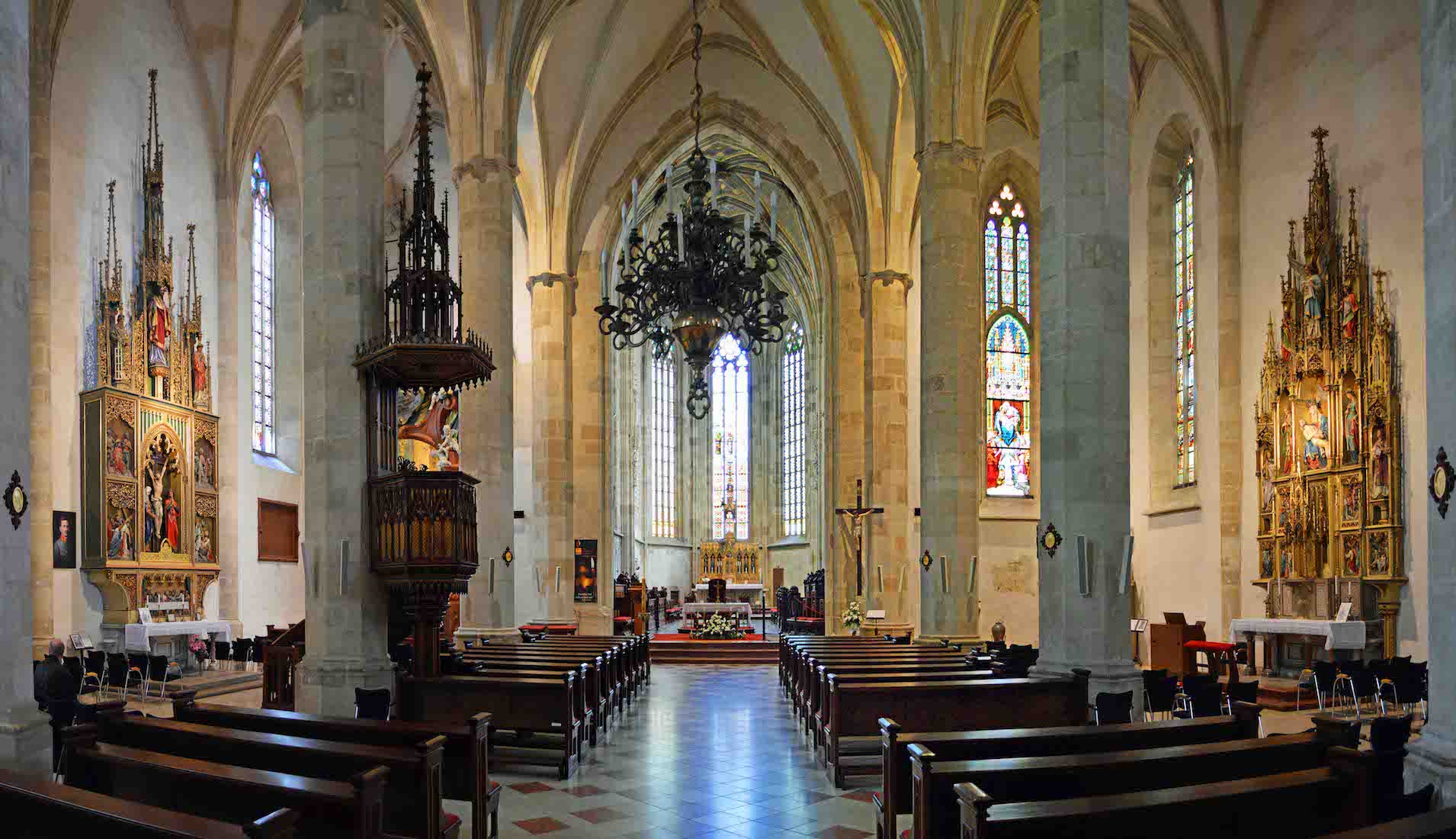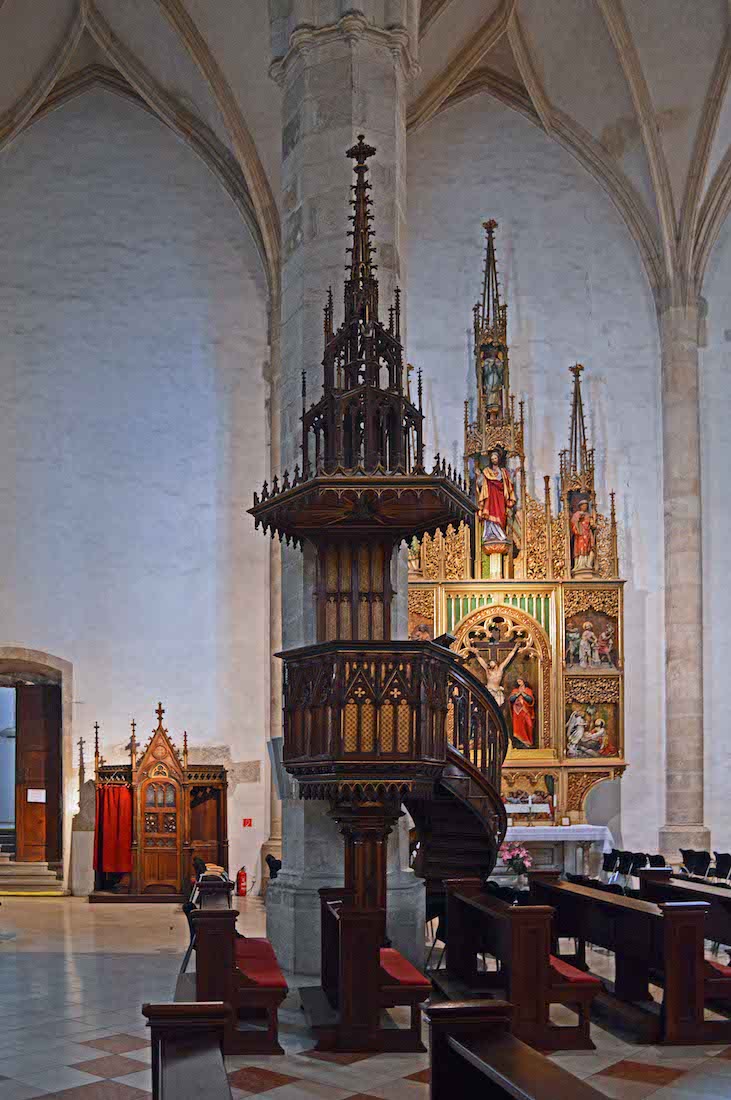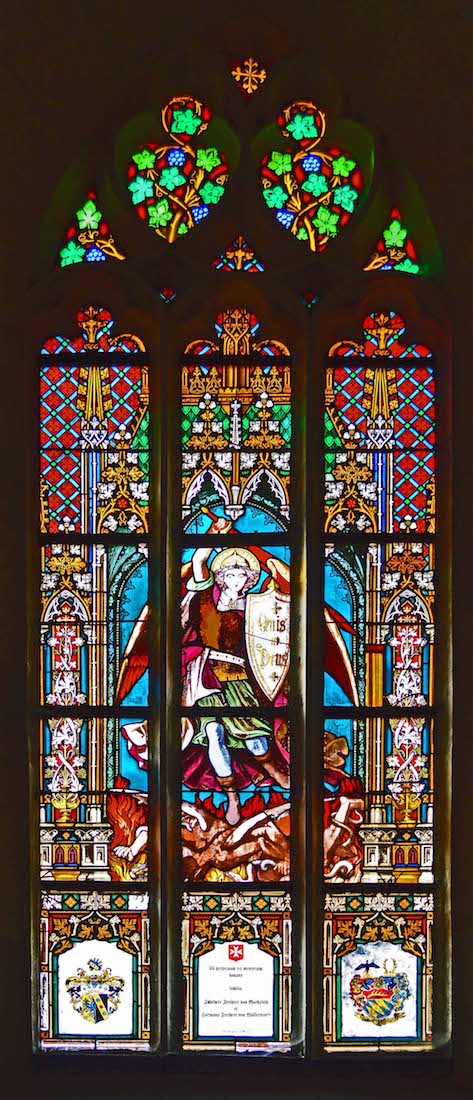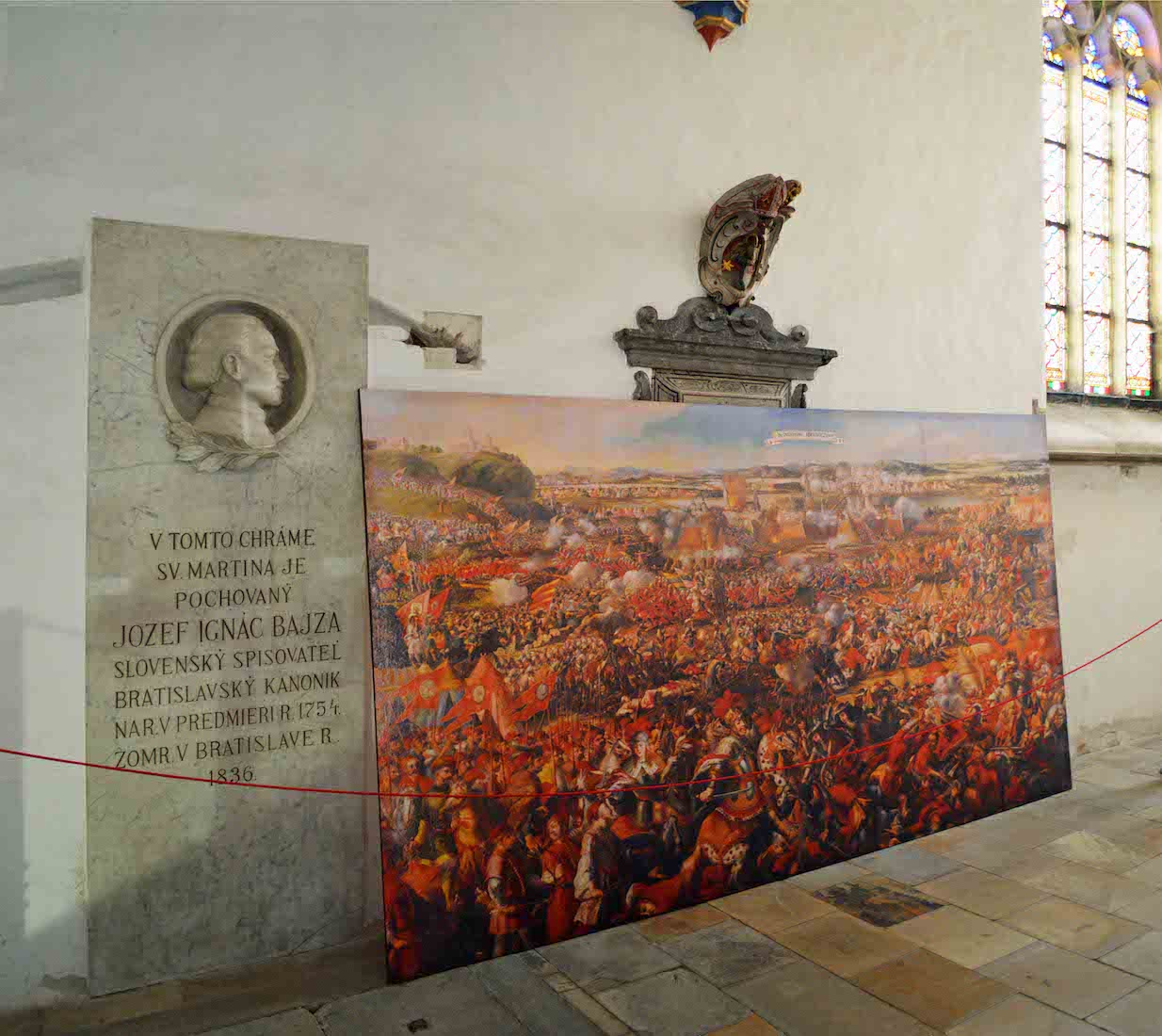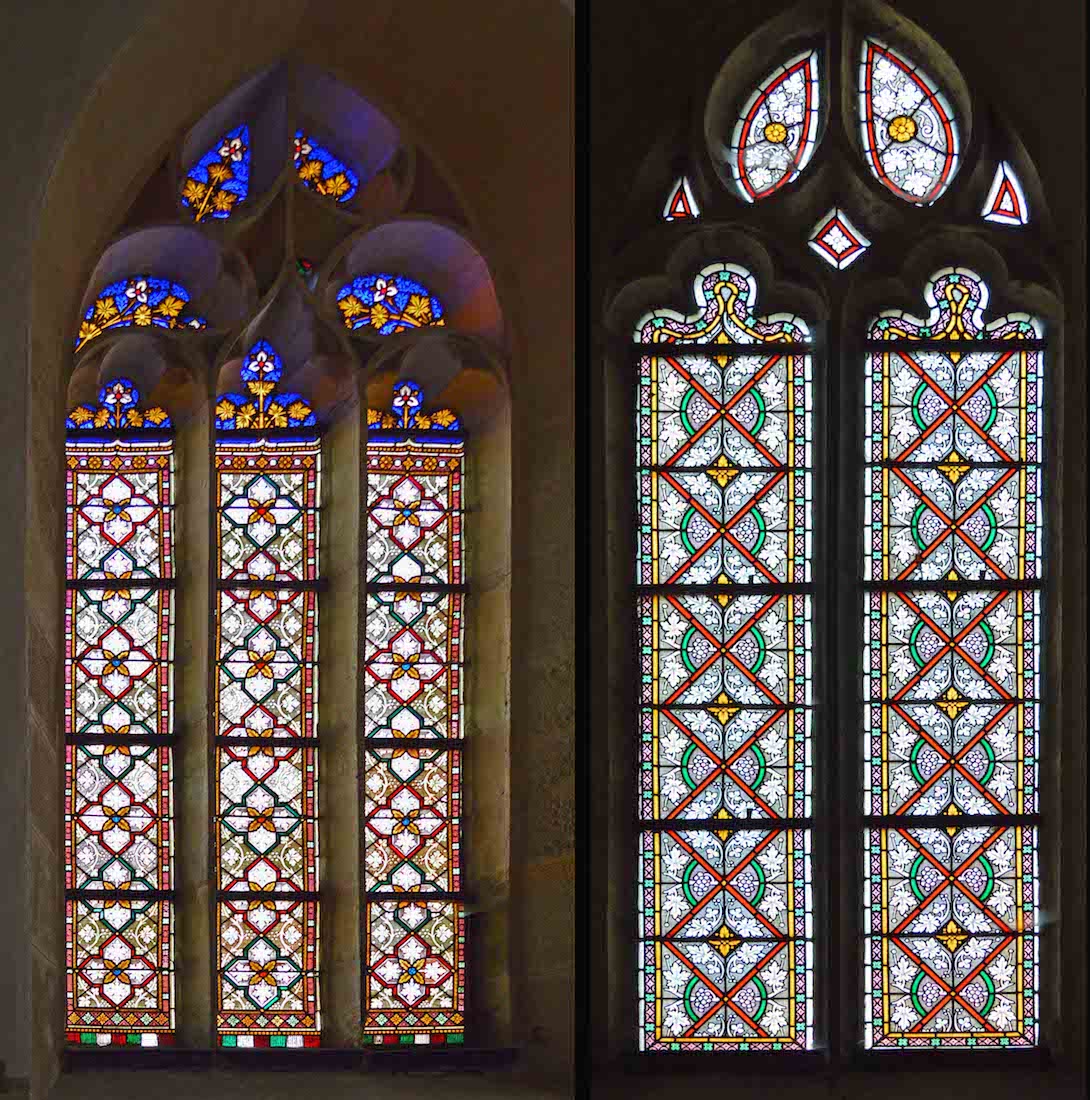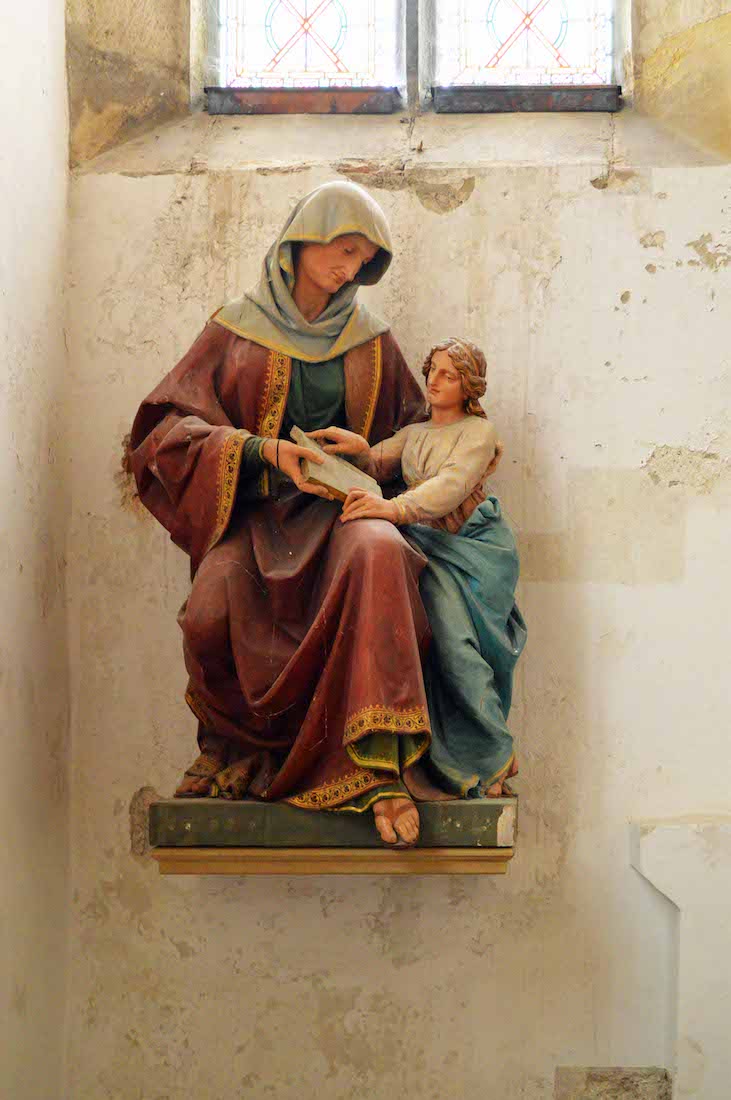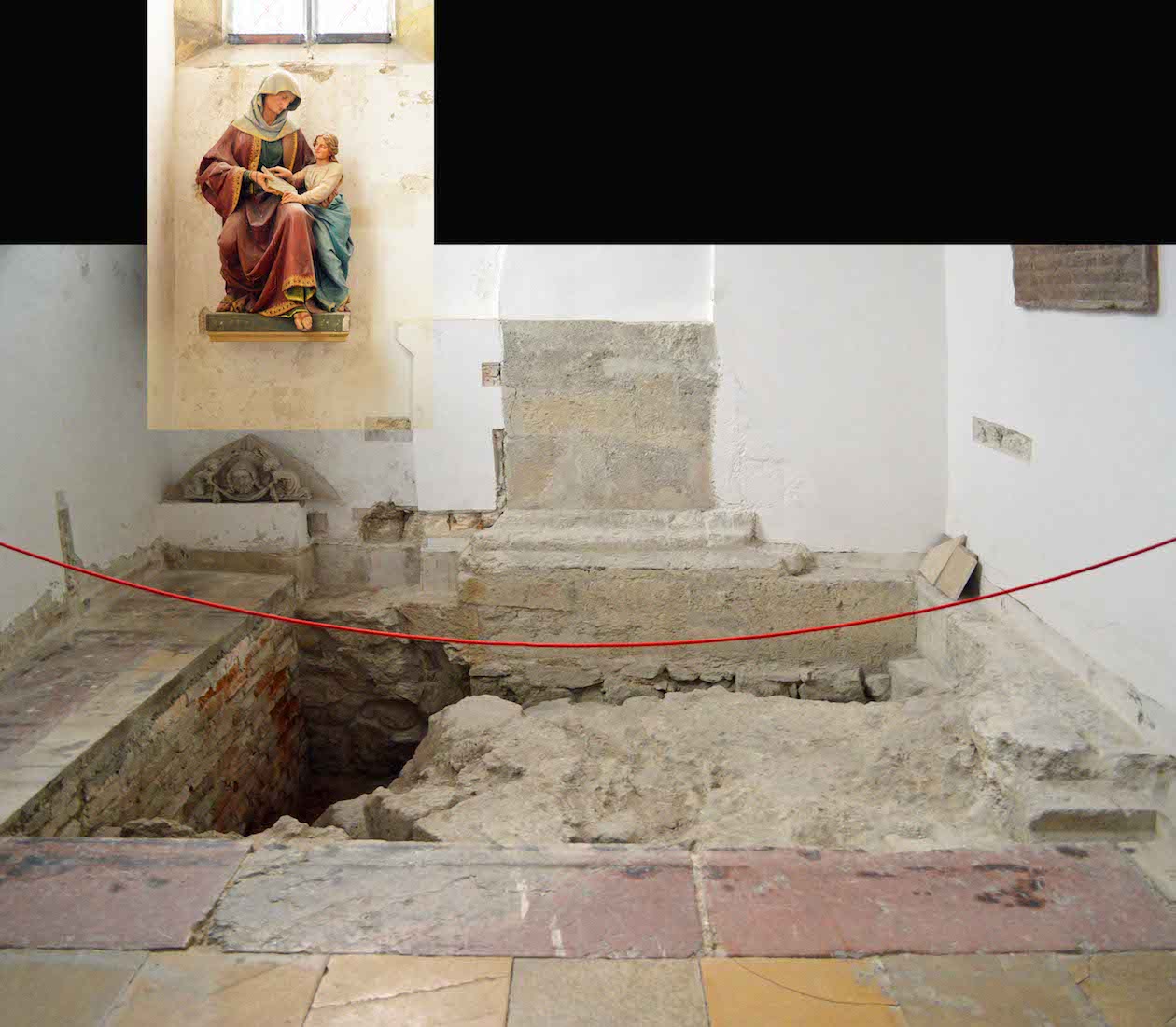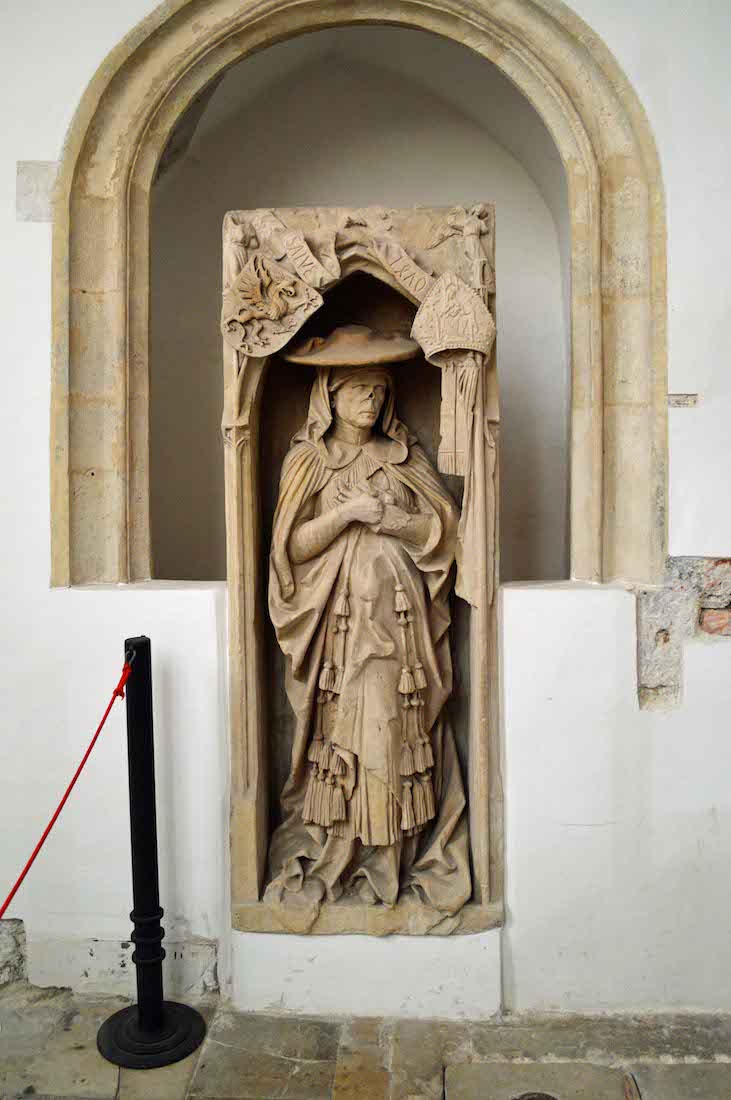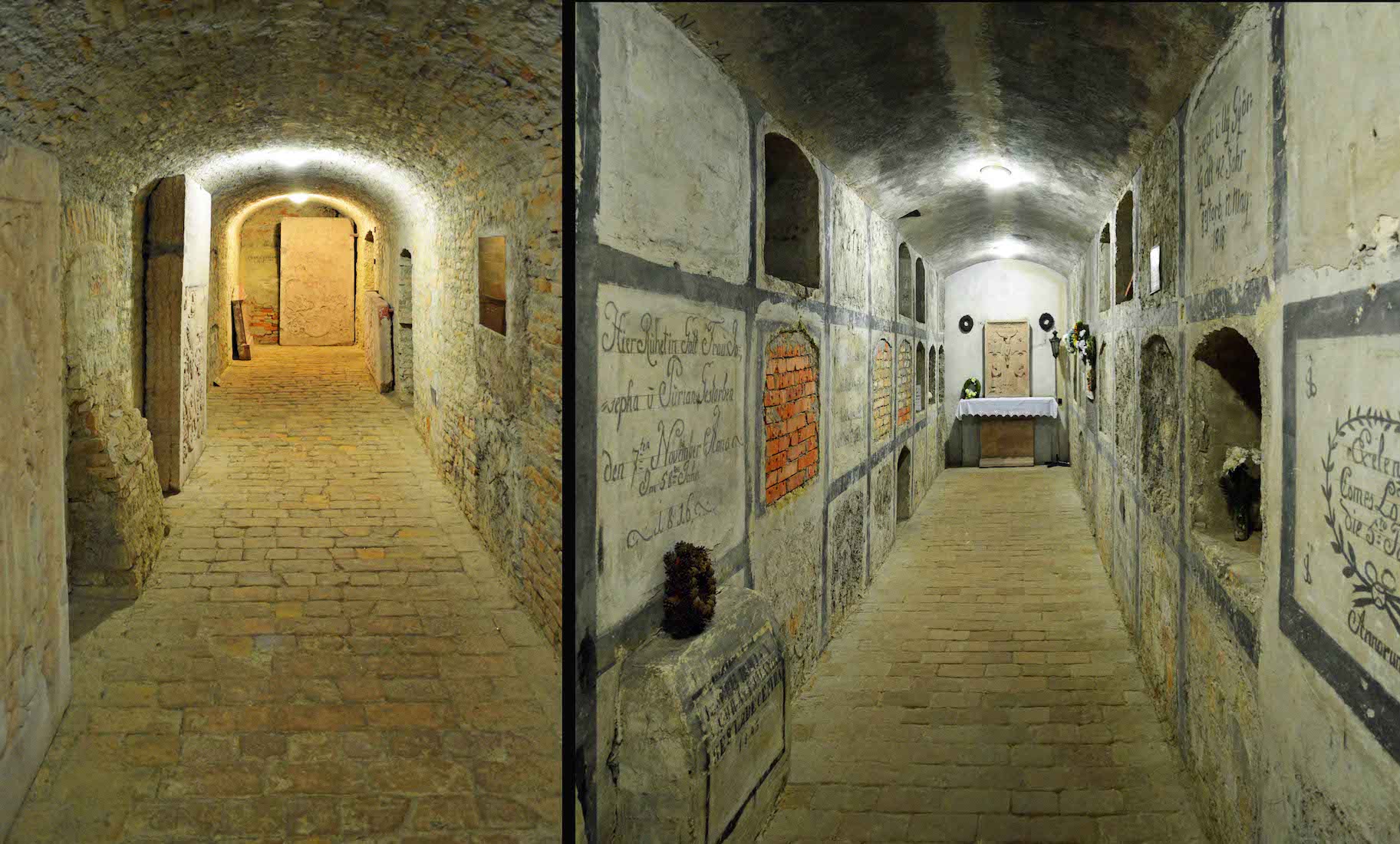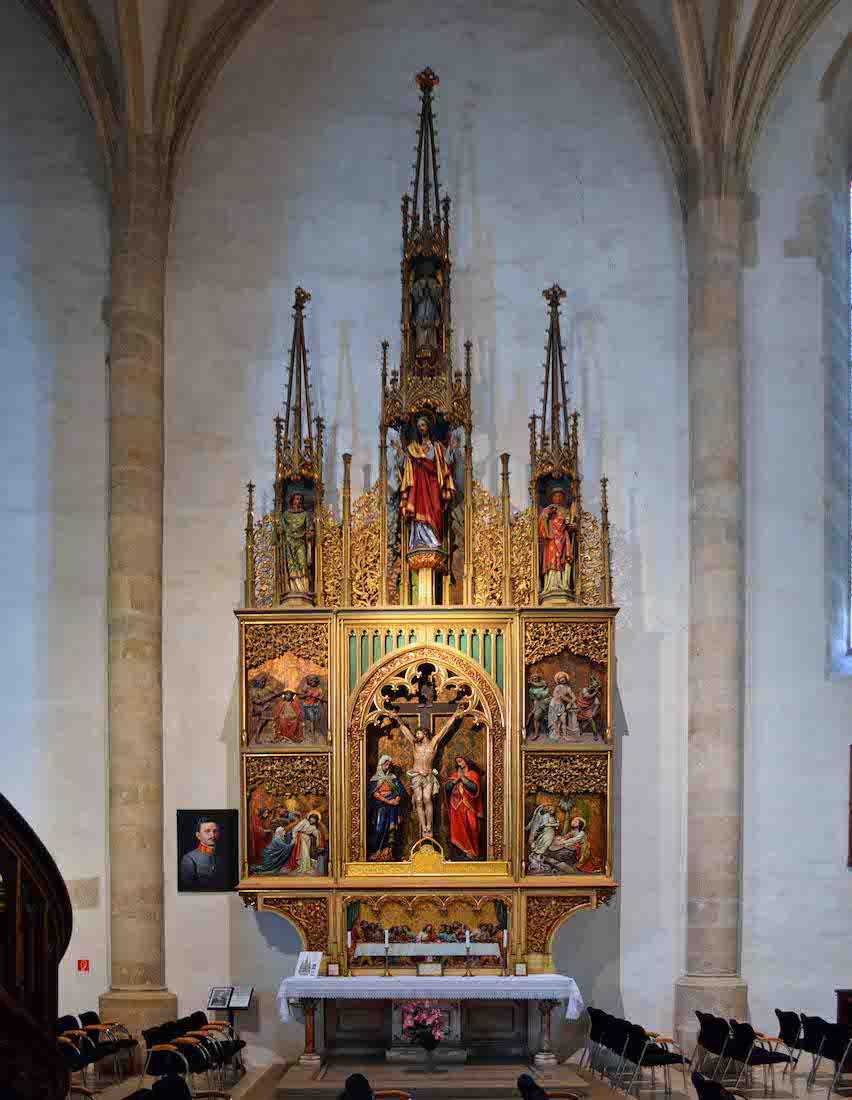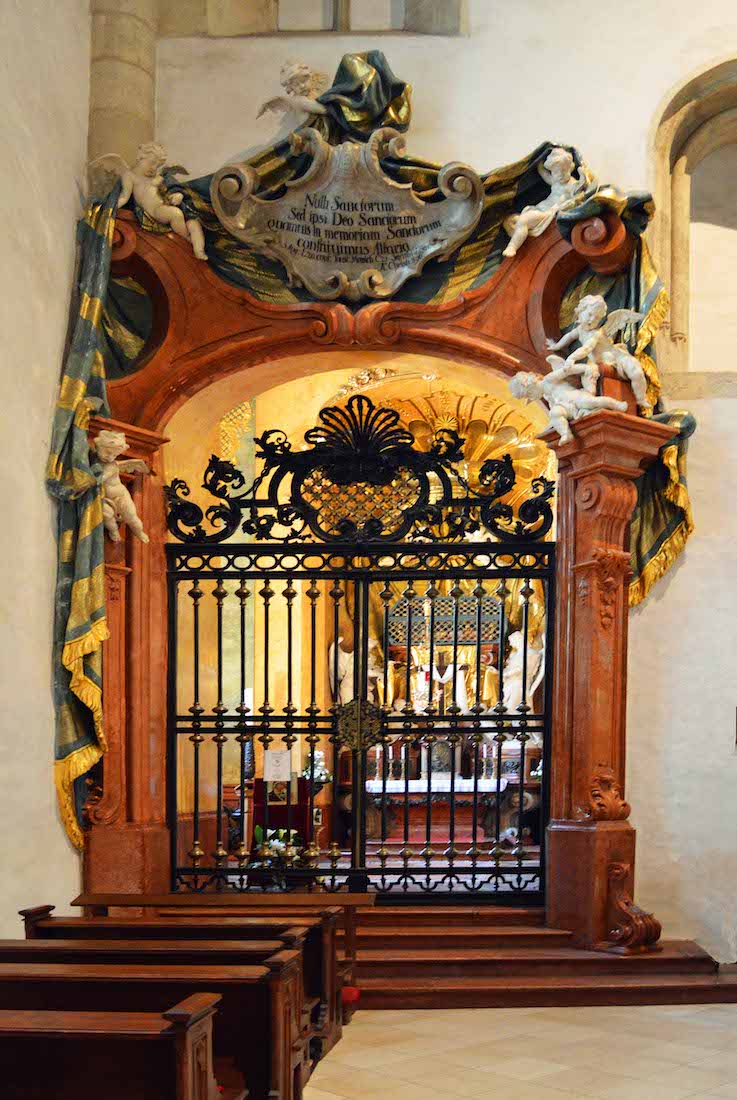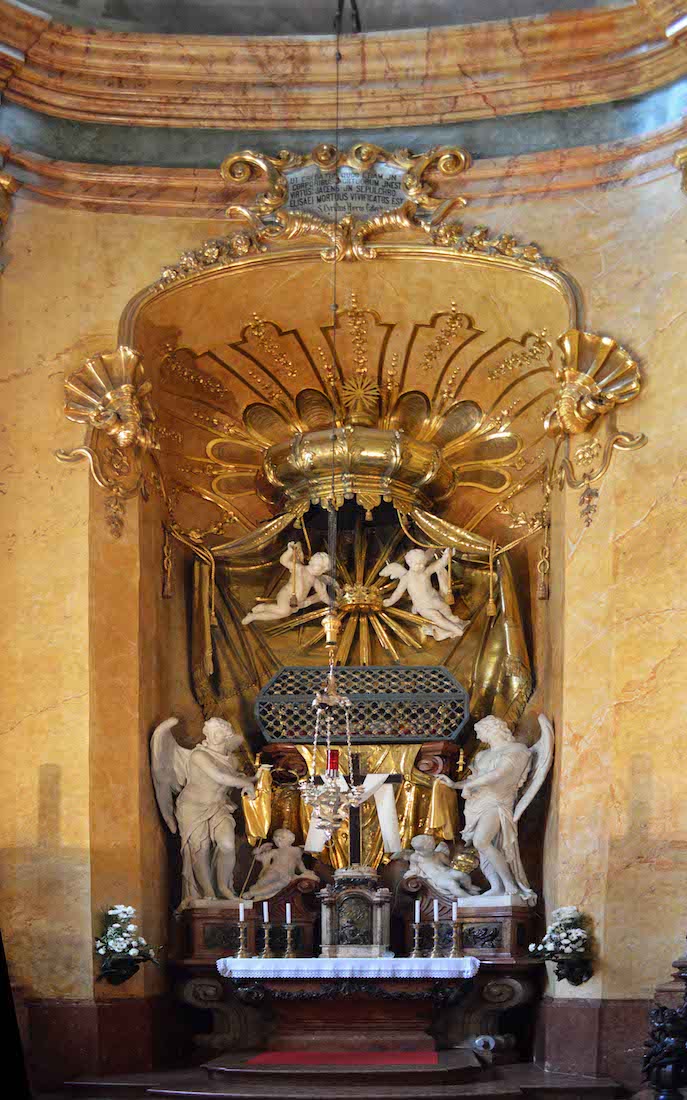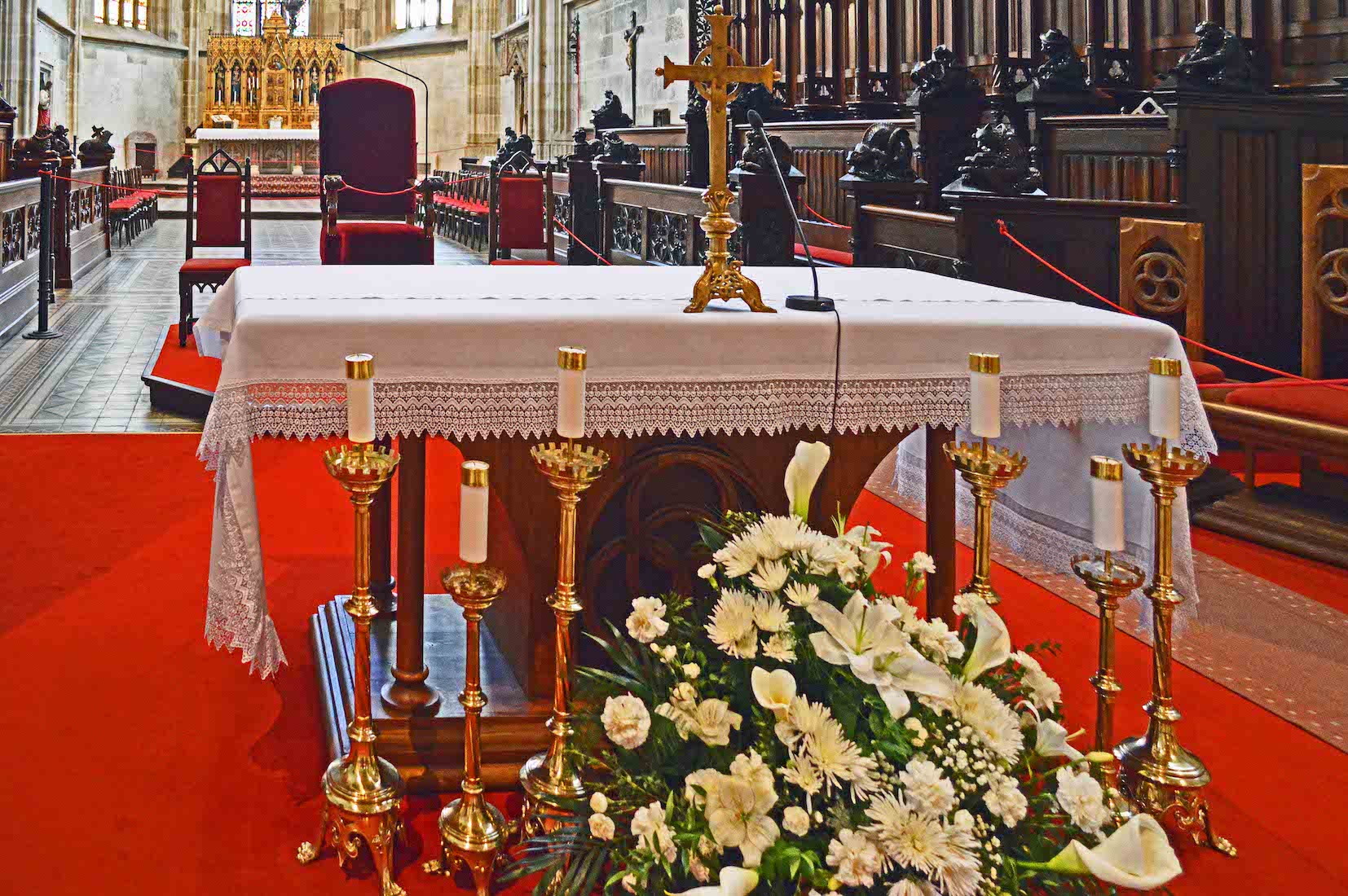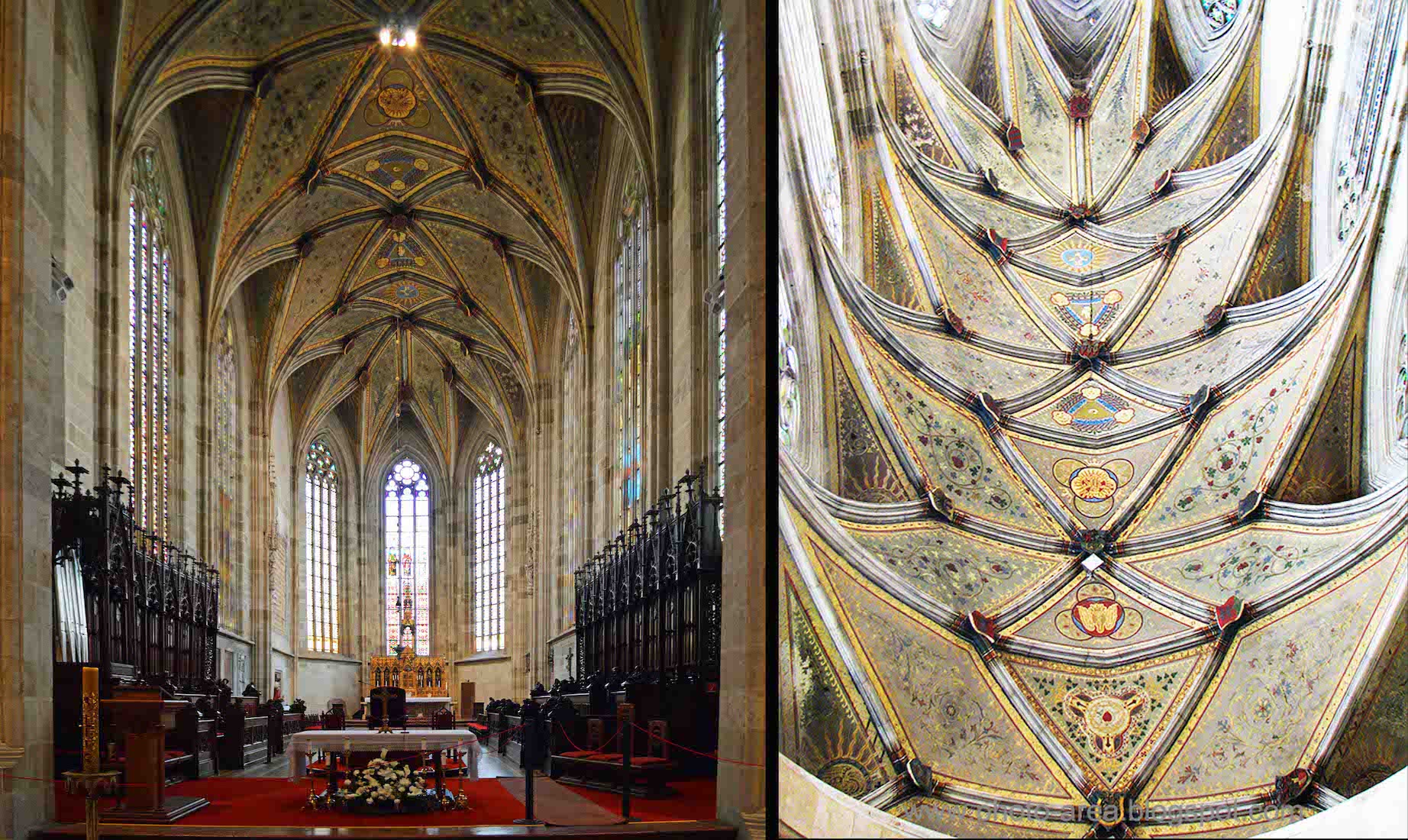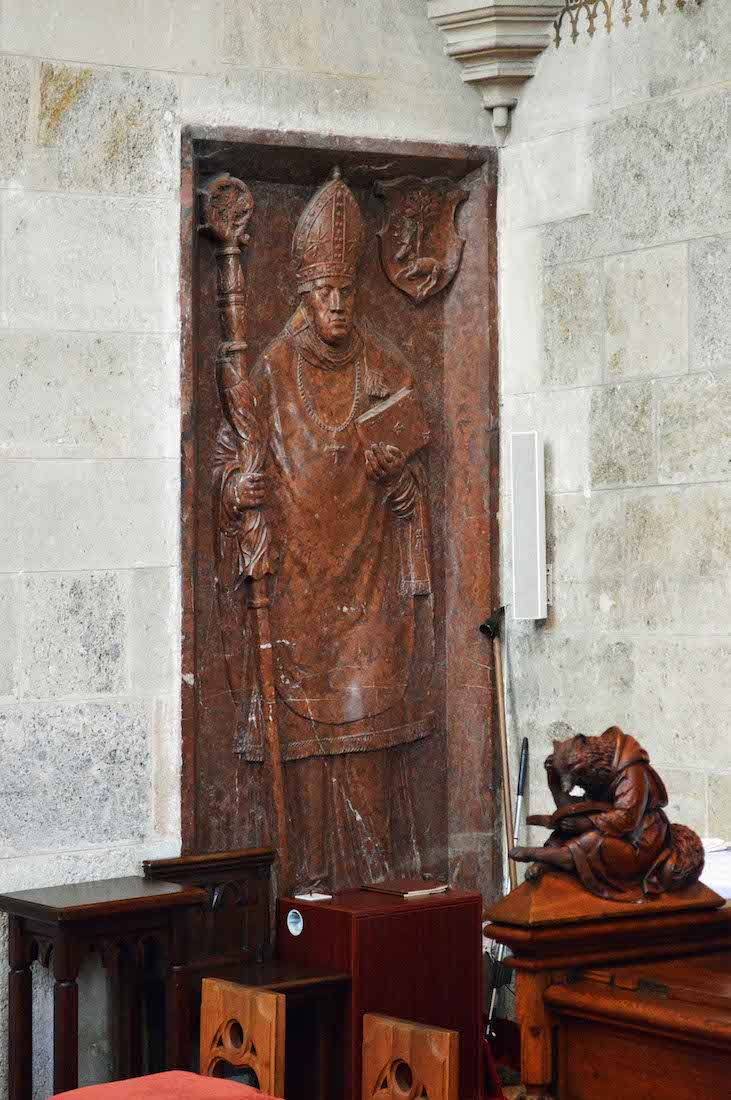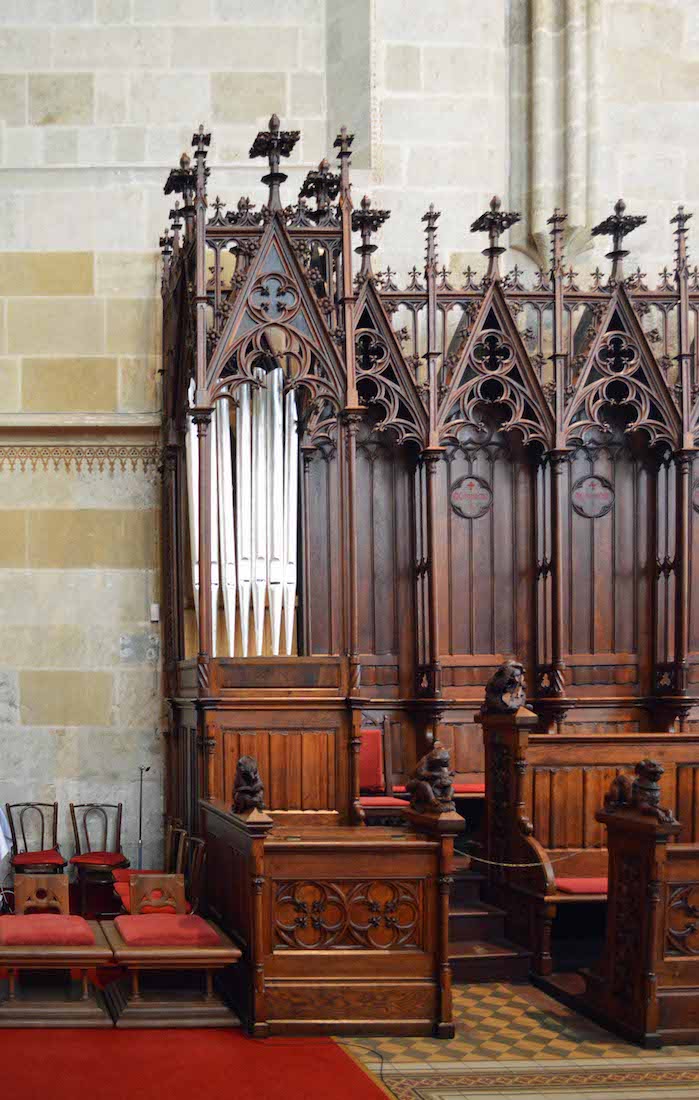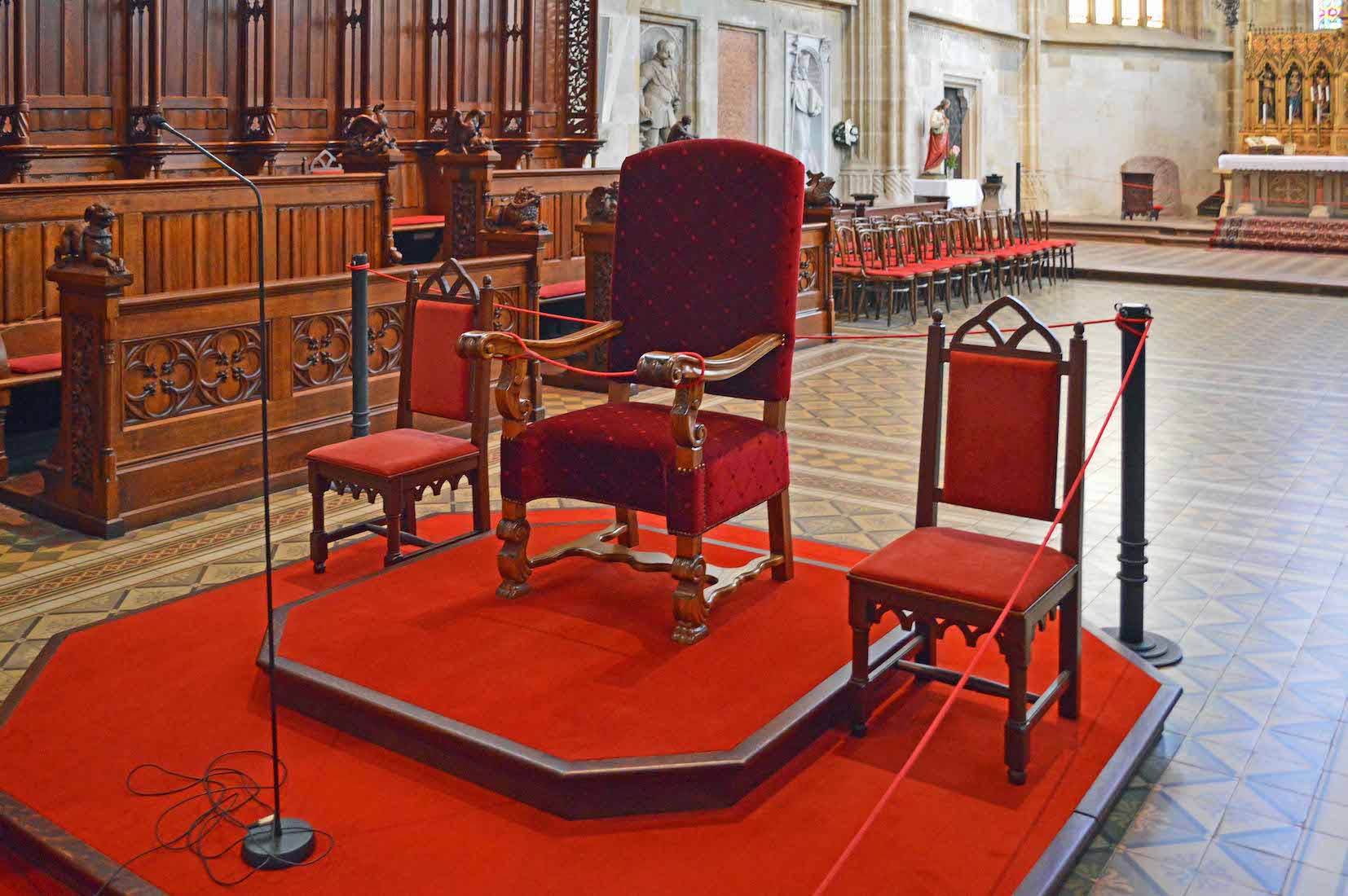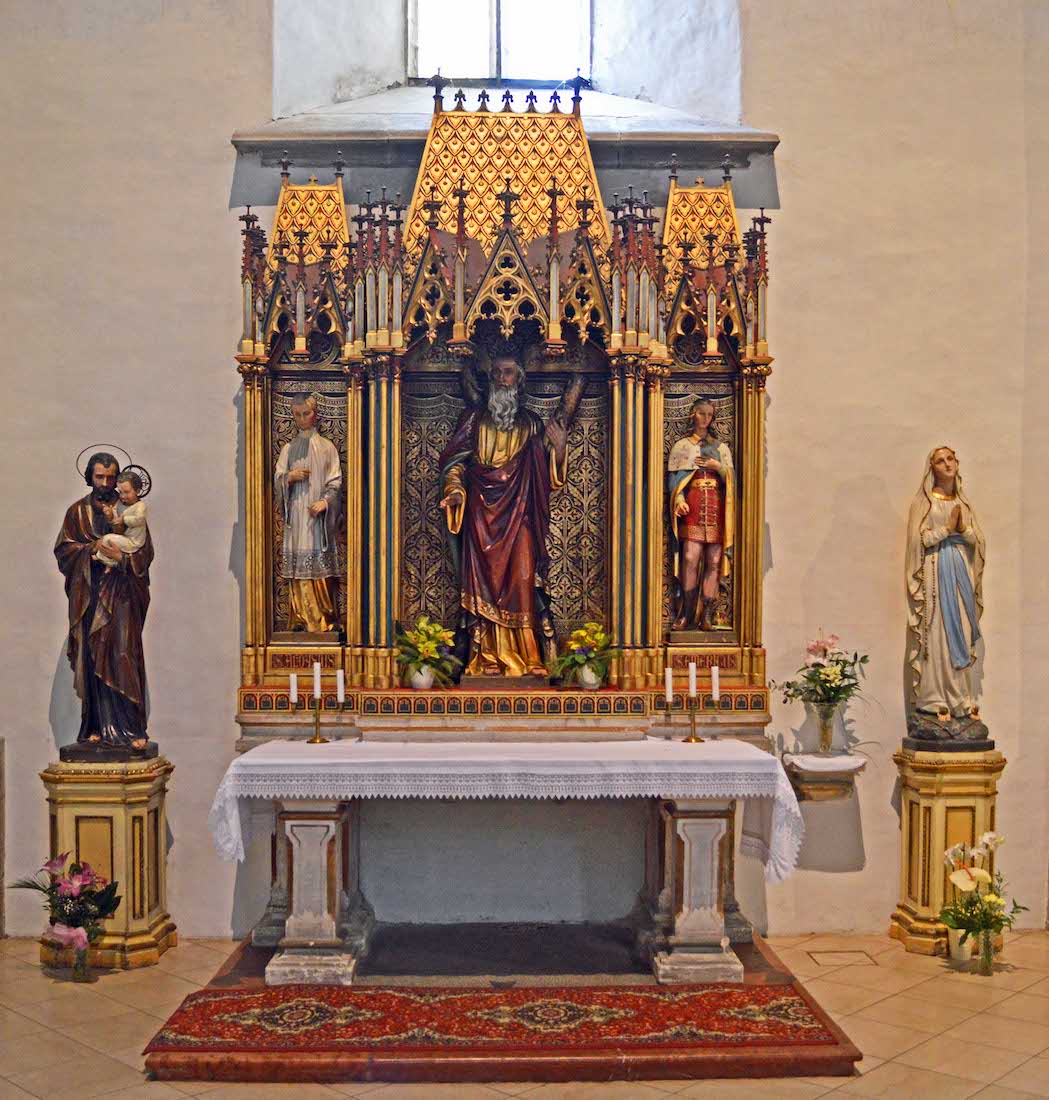
There seems to be some link between St Andrew and Slovakia/Hungary. The central figure of St Andrew is identifiable here because of the diagonal cross on which he is said to have been crucified. St Aloysius and St Emericus stand on either side. Then, apart from the altar stand the Virgin Mary, and St Joseph holding the Christ Child. INDEX
22. NORTH NAVE WINDOW

Above St Andrew’s altar is this attractive floral memorial window.
24. PULPIT
The carved pulpit with its spiral stair is modestly ornate. It is interesting that it is placed so far back in the nave. The door on the left leads through to the St Anne Chapel and the crypt.
25. ST ANNE’S CHAPEL WINDOW
Entering the chapel, we face this window. The warrior’s shield carries the words ‘Quis ut Deus’ – a Latin sentence meaning ‘Who [is] like God?’, and a literal translation of the name Michael. The sentence is particularly associated with Archangel Michael. In art, St. Michael is often represented as an angelic warrior, fully armed with helmet, sword, and shield, as he overcomes Satan, represented as a dragon or a man-like figure.
26. CHAPEL DISPLAY
Europe has such a lot of history! This appears to be a victory scene. At left, Jozef Ignác Bajza (1755 – 1836) was a Slovak writer, satirist and Catholic priest in the Kingdom of Hungary. He is best known for his novel ‘René, young man: events and experiences’, which was the first novel written in the Slovak language. He is buried in St. Martin’s Cathedral.
27. CHAPEL WINDOWS
There are two further windows in the St Anne Chapel – these in the North East corner. The Chapel was added in the 15th century, and built on the site of the former Northern small portal.
28. ST ANNE WITH ST MARY
On the East wall of the chapel is a statue of St. Anne with the Virgin Mary, which was part of the now defunct neo-Gothic Cathedral altar.
29. EXCAVATION
The statue sits above a roped off excavation. Here the foundations of the former Romanesque Karner (charnel house) have been uncovered.
30. CHAPEL EPITAPHS
Just by the excavation in the chapel is this carved epitaph. Turning to the West end of the chapel, we find a steep set of steps leading down to the crypt.
32. ALTAR OF THE CROSS
In prominent position in the North nave is the Altar of the Cross from the Tyrolean workshop of F. Prinoth in St. Ulrich. The centre is the crucifixion, with Mary and John standing by. At the sides are four relief scenes showing painful moments of Jesus’ journey to Calvary, and creating the impression of a Gothic triptych. At top is the Risen Christ.
33. NORTH NAVE SECOND WINDOW
We return to the nave, and continue following along the North wall. This next window dates from 1874, and appears to be the gift of Czechoslovak Commercial Bank.
34. CHAPEL OF JOHN THE ALMONER
In the North-East corner of the nave is the John the Almoner Chapel – the only complete monument of the Baroque period. The chapel stands on the site of the former Gothic sacristy. It was built as a funeral chapel for Archbishop Imrich Esterházy, and also holds the remains of St. John the Almoner. The entrance to the chapel is formed by a large arch flanked by rich drapery, held by a little angel. A baroque heavy metal gate bars entry. The décor of the chapel is the work of JR Donner.
35. CHAPEL ALTAR
Two large angels flank the draped Cross of the altar. Above is a silver coffin under a canopy formed of drapery and a crown: here are stored the remains of St. John the Almoner. These remains were originally stored in the royal chapel in Buda. In 1526 they were transported to Bratislava after the defeat of the Hungarian army by the Turks. They were stored in Bratislava Castle until 1530, when on the order of Ferdinand I they were moved to St. Martin’s Cathedral.
36. THE NAVE ALTAR
As in many cathedrals and churches these days there is a high altar, and a simpler and more central nave altar. It is from here that the Eucharist is administered Sunday by Sunday, with the priest close to the congregation and facing the people.
37. CHANCEL
Technically the Section of the Cathedral where the choir sits is called the chancel, and the sanctuary is the ‘holy of holies’ beyond, containing the high altar. There are some lovely windows here, and notice particularly the glorious flowering chancel ceiling. [Right photo credit: http://alexandru-ciobanu.com/]
38. NORTH BISHOP MEMORIAL
The nave and chancel are separated by a high Gothic arch, supported by large columns. This memorial to a bishop is on the chancel side of the North column..
39. STALLS
The precentor’s stall and choir stalls are against the North wall of the chancel. It is interesting the way the organ pipes appear here.
40. CATHEDRA
The bishop‘s chair is called a ‘cathedra’, and its presence here is what entitles St Martin’s to be called a cathedral. Notice in the background the plaque between two epitaphs, a statue and door, and then the high altar.


